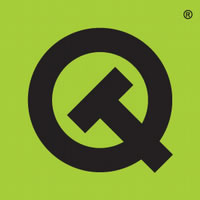 Trolltech may not be well known, but they make a software product called Qt (pronounced “cutie”) which is used by many. It’s a package that allows developers to write code that works across several platforms (Windows, Linux and MacOS X) so only one set of API’s (Applications Programming Interfaces) need to be learnt.
Trolltech may not be well known, but they make a software product called Qt (pronounced “cutie”) which is used by many. It’s a package that allows developers to write code that works across several platforms (Windows, Linux and MacOS X) so only one set of API’s (Applications Programming Interfaces) need to be learnt.
Qt is used both commercially and in the open source community (it’s the basis for the Linux KDE windowing environment). Commercially there are several well known programs using it, including Skype and various packages from Google and Adobe.
Qt has been around for quite a while and more recently introduced Qtopia a complete Linux development environment, using Qt as a basis for its user interface.
Qtopia comes in several editions including a phone edition which is used by several vendors including Motorola. It uses Embedded Linux (version 2.4) and then Qtopia sits on top, offering various standard interfaces (including the user interface and standard Qtopia applications like calendaring, contacts, etc).
Qt and Qtopia are designed to make writing applications easy, however it’s still a relatively complicated task. Supporting lots of flavours of hardware further complicates things.
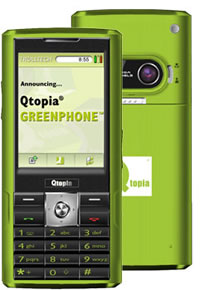 Trolltech Greenphone
Trolltech Greenphone
In addition to Qt and Qtopia, Trolltech have come out with a mobile development device, known as the Greephone. Unsuprisingly it has a green casing, just so you don’t forget. The phone only supports GSM/GPRS.
The Greenphone comes with Qtopia Phone Edition 4.1.4 and the Linux kernel 2.4.19.
The hardware consists of a touch-screen and keypad UI QVGA LCD colour screen, Intel XScale 312 MHz PXA270, 64MB RAM & 128MB Flash, Mini-SD card slot, Broadcom BCM2121 GSM/GPRS baseband processor, Bluetooth and Mini-USB port.
Though it’s not designed to be used in production, it is designed to allow developers to rapidly prototype applications that can then be moved on to a real phone before expensive prototypes are made.
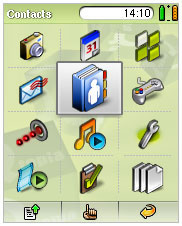 Applications, new kernels and versions of Qt and Qtopia can be loaded on to the Greenphone through the mini USB connection.
Applications, new kernels and versions of Qt and Qtopia can be loaded on to the Greenphone through the mini USB connection.
The Greenphone comes with a complete Qtopia SDK (software development kit) which provides a complete environment for developing and modifying application software for Qtopia Phone Edition. It can produce packages that run on the Greenphone itself or run through the virtual phone included with the SDK.
There are already over 4 million Linux phones utilising Trolltech’s software, this just allows manufacturers to develop Linux applications and get them to market more rapidly.
The mobile phone market is already a crowded space with Microsoft Windows Mobile 5.0 and Symbian dominating the market. Maybe this will give Linux the mobile boost it needs to push it into the mainstream.
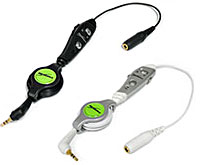 If you’re fed up with having to use the rubbish headphones that came with your Treo, you may want to consider investing in BoxWave’s Dual Handsfree Stereo Adapter.
If you’re fed up with having to use the rubbish headphones that came with your Treo, you may want to consider investing in BoxWave’s Dual Handsfree Stereo Adapter.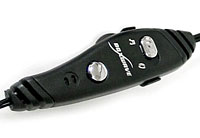 The unit features a simple (gold plated) 2.5mm to 3.5mm adapter which connects up to a small control unit which includes an integrated microphone, single-touch answer call button, volume control, and a switch for toggling between music and handsfree phone mode.
The unit features a simple (gold plated) 2.5mm to 3.5mm adapter which connects up to a small control unit which includes an integrated microphone, single-touch answer call button, volume control, and a switch for toggling between music and handsfree phone mode.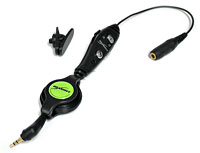 Giving it a bit of welly with some MP3s played back on
Giving it a bit of welly with some MP3s played back on 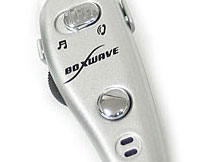 Overall, we found the BoxWave to be well worth the outlay (currently on offer from their site at $20.95) and a great investment if you want to be able to get the best music performance out of your Palm Treo 650/700p/700w.
Overall, we found the BoxWave to be well worth the outlay (currently on offer from their site at $20.95) and a great investment if you want to be able to get the best music performance out of your Palm Treo 650/700p/700w.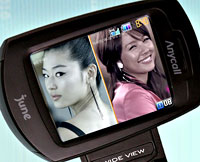 Yet more proof that Koreans are spoilt rotten when it comes to having the very latest must-have mobile gadgets comes in the form of Samsung’s brand new phone – displayed, as ever, by scantily clad models.
Yet more proof that Koreans are spoilt rotten when it comes to having the very latest must-have mobile gadgets comes in the form of Samsung’s brand new phone – displayed, as ever, by scantily clad models. The chunky black clamshell phone also lets users switch between having a small Picture in Picture (PiP) display showing the secondary channel or splitting the display in half, with the two selected channels sharing the total viewing area.
The chunky black clamshell phone also lets users switch between having a small Picture in Picture (PiP) display showing the secondary channel or splitting the display in half, with the two selected channels sharing the total viewing area.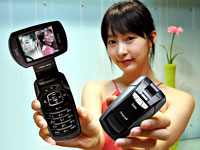 Naturally, users can also elect to fill the screen with just the one channel for fuddy-duddy, old-school types who are satisfied with just one channel playing simultaneously.
Naturally, users can also elect to fill the screen with just the one channel for fuddy-duddy, old-school types who are satisfied with just one channel playing simultaneously.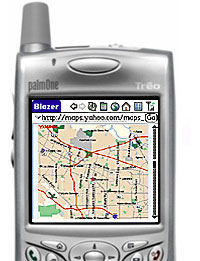 With more Internet-enabled handsets on the market, it’s not surprising that more punters are getting a bit of Web action on the move, with email and weather sites being the top two most visited mobile sites.
With more Internet-enabled handsets on the market, it’s not surprising that more punters are getting a bit of Web action on the move, with email and weather sites being the top two most visited mobile sites.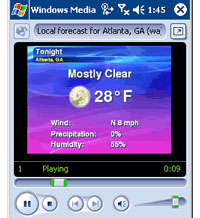 Top US Mobile Websites (June 2006)
Top US Mobile Websites (June 2006)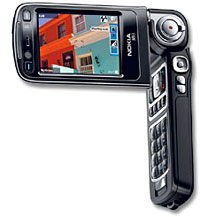 Hollywood hot shot Gary Oldman is today releasing his new short film, shot on the Nokia N93 we’re told.
Hollywood hot shot Gary Oldman is today releasing his new short film, shot on the Nokia N93 we’re told.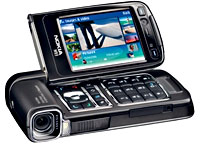 Happy Slapping
Happy Slapping We’ve been keeping our eyes on
We’ve been keeping our eyes on 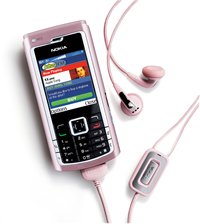 O2 have announced the usage charges of Visual Radio. At O2’s standard data rates of £3.00 per Mb dependent on tariff or O2 Browse and Download bolt-ons from £3 for 2mb and £5 for 4mb.
O2 have announced the usage charges of Visual Radio. At O2’s standard data rates of £3.00 per Mb dependent on tariff or O2 Browse and Download bolt-ons from £3 for 2mb and £5 for 4mb. A visual communications company, All New Video, have announced a deal with BBC to enable feedback and input into TV programmes from viewers, video calling from 3G phones, Web cams and ISDN. On the voice side, it will add VoIP to its inbound voice channels.
A visual communications company, All New Video, have announced a deal with BBC to enable feedback and input into TV programmes from viewers, video calling from 3G phones, Web cams and ISDN. On the voice side, it will add VoIP to its inbound voice channels.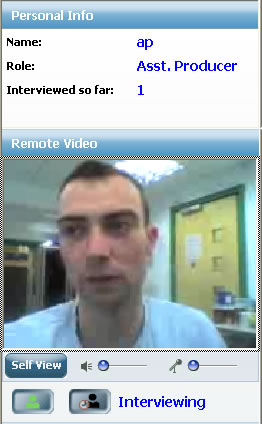 The system give the assistant producer the ability to carry out a video chat with the viewer letting them ascertain their suitability of the show – frankly, filter out those not relevant. Each person can also be ranked and some notes made about them.
The system give the assistant producer the ability to carry out a video chat with the viewer letting them ascertain their suitability of the show – frankly, filter out those not relevant. Each person can also be ranked and some notes made about them.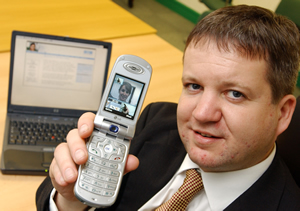 The new BBC system will let people do the same from the safety of their own bedrooms, where they’ll be able to leave their five minutes of video wisdom in a video mail system.
The new BBC system will let people do the same from the safety of their own bedrooms, where they’ll be able to leave their five minutes of video wisdom in a video mail system.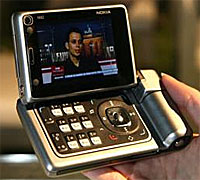 Will you be one of the near-half billion (446m to be exact) people that IMS Research estimate will be watching TV on their cellular handsets around the globe by 2011?
Will you be one of the near-half billion (446m to be exact) people that IMS Research estimate will be watching TV on their cellular handsets around the globe by 2011?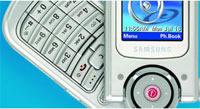 IMS Research
IMS Research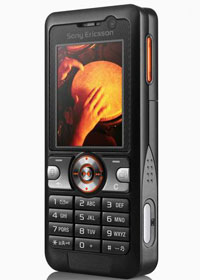 Sony Ericsson has announced the latest addition to its popular ‘K’ series, with the ‘candybar’ shaped Sony K618 promising super fast video, music streaming and Web browsing.
Sony Ericsson has announced the latest addition to its popular ‘K’ series, with the ‘candybar’ shaped Sony K618 promising super fast video, music streaming and Web browsing.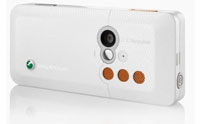 The memory card can be upgraded up to a maximum of 1GB of storage.
The memory card can be upgraded up to a maximum of 1GB of storage.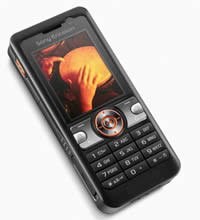 For keen bloggers who like to update their personal diaries when you’re on the move, the K618 can send images direct to their own blog via Mobile Blogger.
For keen bloggers who like to update their personal diaries when you’re on the move, the K618 can send images direct to their own blog via Mobile Blogger.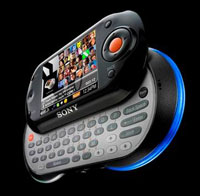 Sony has released details of the Mylo, a groovy new Wi Fi-enabled personal communications device aimed at Instant Messaging nutters.
Sony has released details of the Mylo, a groovy new Wi Fi-enabled personal communications device aimed at Instant Messaging nutters.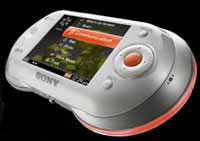 For teens who, like, don’t find email too slow for their hyperactive needs, there’s also an e-mail client, compatible with services such as Yahoo! Mail and the Gmail web mail service.
For teens who, like, don’t find email too slow for their hyperactive needs, there’s also an e-mail client, compatible with services such as Yahoo! Mail and the Gmail web mail service. Battery life looks pretty good too, with a claimed 45 hours of music playback and around seven hours of instant-message chatting/Web surfing.
Battery life looks pretty good too, with a claimed 45 hours of music playback and around seven hours of instant-message chatting/Web surfing.